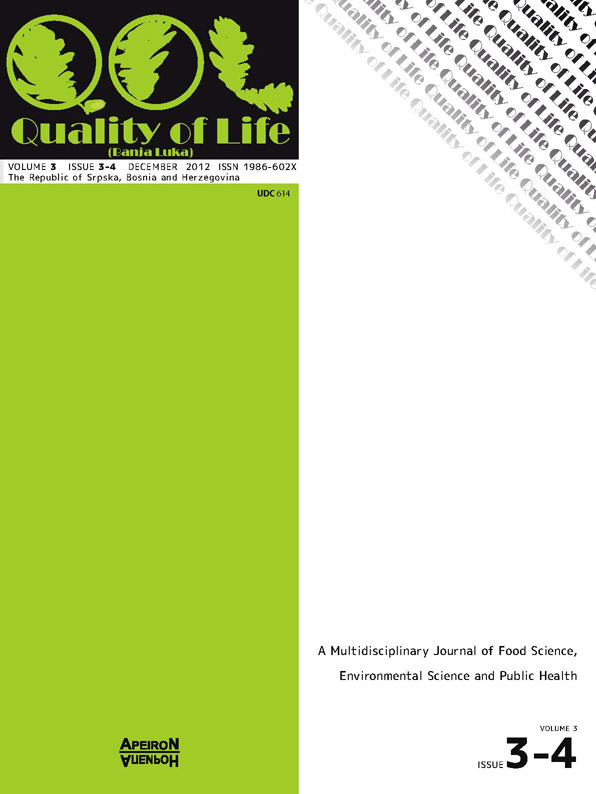Influence of Temperature and Heat Treatment Regime on Chemical Properties of Pork Meat
DOI:
https://doi.org/10.7251/QOL1203049VAbstract
The real importance of meat in human nutrition has been defined during the last century. Professional and scientific publications of the twentieth century are often written about the nutritional value of meat. Thermal processing of meat is as old as civilization itself. Meat drying as a procedure for a longer shelf life, probably first appeared as a result of some accident in which the fresh meat has been exposed to heat. The first works about the problems of heat treatment of pork were published in the 1950s.The aim of this paper was to investigate the effect of temperature and different methods of heat treatment on chemical properties of processed pork meat. To determine the optimal conditions for various heat treatment processes, in this paper, meat processing was performed at different temperatures, and set the temperature range from 51 ºC to 100 ºC. Therefore, the meat is processed by dry heat treatment (roasting) and cooking in water (at atmospheric pressure). Then, the change of chemical composition of processed meat was noted (moisture content, ash, fat, protein, micronutrients).
Downloads
Published
2012-12-15
Issue
Section
Чланци
